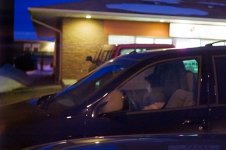Jim Watts
Still trying to See.
There have been a number of previous threads on the R-D1's metering characteristics, for example
http://www.rangefinderforum.com/forums/showthread.php?t=22545&highlight=meter+under
http://www.rangefinderforum.com/forums/showthread.php?t=5143&highlight=meter+under
In general the consensus is that the R-D1 under exposes to protect the highlights by 2/3 EV, which in most cases is my finding and the correction I set as standard.
The metering characteristics of nearly all external light meters will be set for the characteristic curve of film (usually slide) and not for a digital senor which will be more linear and therefore will probably only be applicable/agree in the midrange (Zone V).
http://www.rangefinderforum.com/forums/showthread.php?t=22545&highlight=meter+under
http://www.rangefinderforum.com/forums/showthread.php?t=5143&highlight=meter+under
In general the consensus is that the R-D1 under exposes to protect the highlights by 2/3 EV, which in most cases is my finding and the correction I set as standard.
The metering characteristics of nearly all external light meters will be set for the characteristic curve of film (usually slide) and not for a digital senor which will be more linear and therefore will probably only be applicable/agree in the midrange (Zone V).




